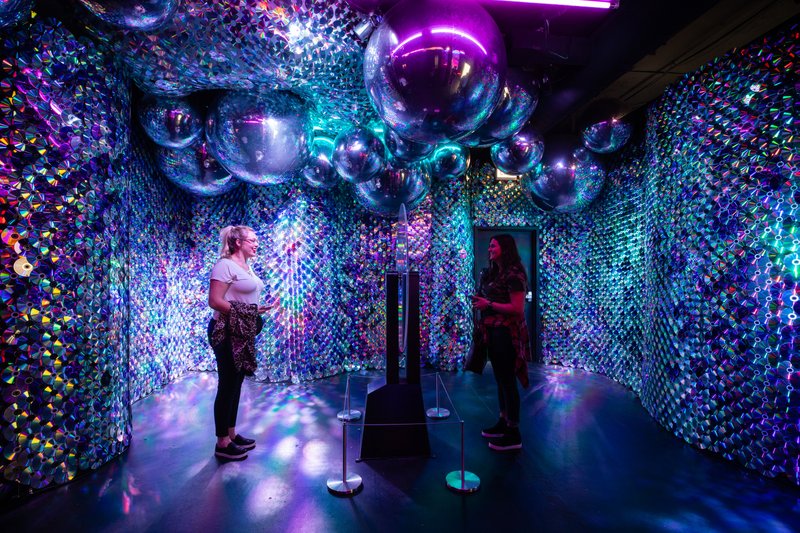“Do you know anything about the Wndr museum?” I ask my nephews, as we’re driving to Chicago’s West Loop for our reserved 4:30 p.m. time slot.
“Nope. I’ve never even heard of it, to be honest,” says Louie, who is 10.
Simon, 11, says he knows a girl who had been thinking about having a birthday party there but decided not to because it’s expensive (at $32 a person, plus tax, she’s not wrong).
“Excellent. You’re blank slates!” I tell them.
And that’s exactly why I was taking them along to Chicago’s Wndr museum, the city’s latest example of a nationwide trend: public spaces that are highly immersive, experiential and, above all, Instagrammable. I wanted to hear the reactions of two smart, open-minded but opinionated kids who don’t have social media accounts or carry phones with them.
The museum, which was founded by tech entrepreneur Brad Keywell, opened as a pop-up a little over a year ago and, following a slew of strong ticket sales, morphed into a permanent fixture. Housed in the first floor of a three-story red brick commercial building, visitors can buy tickets for a particular time slot online or pay by credit card at the front door. It’s in its third installation, or “chapter,” since opening.
The latest chapter, which opened in the fall, is “A Hero’s Journey Through Wndr,” which was inspired by the book The Hero With a Thousand Faces, by mythologist Joseph Campbell.
Going through the museum is a little like winding through a fun house, or visiting Willy Wonka’s factory. There are black walls that turn bright with light as we paint them; floors that turn Technicolor as we dance over them; and the most famous room — one that many come here specifically to see — INFINITY MIRRORED ROOM: LET’S SURVIVE FOREVER by Japanese artist Yayoi Kusama. There, amid graceful floating balls and mirrors reflecting mirrors reflecting mirrors, we’re allotted just one minute. So we take it all in, gazing at one another and at our multiplying reflections, wishing we could stay just a little longer to find a different angle, a new perspective.
In all, we spend about an hour exploring what Wndr has to offer — the art, the science, the technology.
I was surprised to find that, despite the museum’s obvious Instagrammability, at the time we were there, people were fully engaged in the exhibits. There are miniature art displays, too, like scenes in the lockers where you can store your belongings, mini-beach displays on the water fountains and I won’t spoil it, but don’t skip a visit to the bathroom.
After we leave the exhibit, I ask the boys for their thoughts on museums. Whether Wndr, and other “experiences” like it, fit the museum category is a question known to spark arguments among fans and critics of this new, immersive, social-media-friendly category.
“What we just went to,” I ask, “was it a museum?”
Louie agrees wholeheartedly. “I think a museum can be anything. From the Museum of Contemporary Art to this — it’s just looking at stuff and interacting with it.”
Simon doesn’t see it as a museum. To him, I think, it was something better. “I think of it more as a playground,” he says. “A playground for the mind.”
Wndr Museum, 1130 W. Monroe St., Chicago; noon-7 p.m. Wednesday-Friday, 10 a.m.-9 p.m. Saturday; $32, free for children 2 and under; wndrmuseum.com
